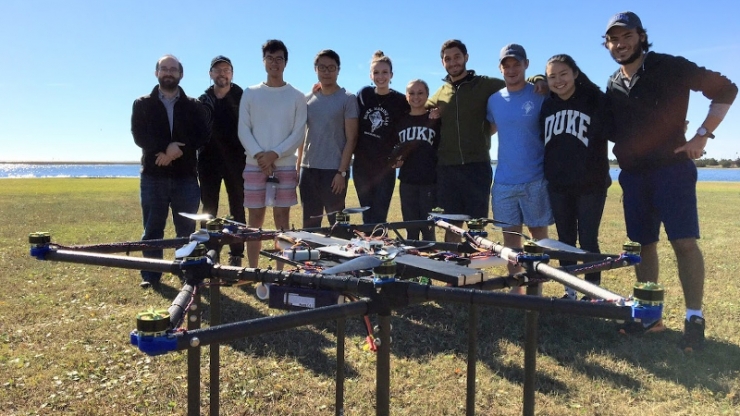We know less about the ocean floor than the surface of the moon. As one of the most unexplored areas of the world, multiple companies have begun to incentivize ingenuity towards exploring the oceans. Among these organizations are the Gates Foundation, the National Academy of Sciences, and X Prize.

Martin Brooke, second from left, and the student team with their giant drone.
Martin Brooke, an Associate Professor of Electrical and Computer Engineering at Duke, is presently leading a group of students who are working on mapping the ocean floor in an efficient way for the X Prize challenge.
Brooke said “open ended problems where you don’t know what to do” inspire him to do research about ocean engineering and design.

Martin Brooke
Collaborating with professors at the Duke Marine Lab that “strap marine sensors on whales” was a simple lead-in to starting a class about ocean engineering a few years ago. His teaching philosophy includes presenting the students with problems that make them think, “we want to do this, but we have no idea how.”
Before working on a drone that drops sensor pods down into the ocean to map the ocean floor, Brooke and his students built a sensor that could be in the ocean for a month or more and take pH readings every five seconds for a previous X Prize challenge.
Addressing the issues that many fisheries faced, he told me that he met an oyster farmer in Seattle who wished that there were pH sensors in the bay because sometimes tides bring in “waves of high pH water into the sound and kill all of the oysters without warning.” Citing climate change as the cause for this rise in pH, Brooke explained how increased carbon dioxide in the air dissolves into the water and raises the acidity. Emphasizing how “there’s not enough data on it,” it’s clear that knowing more about our oceans is beneficial economically and ecologically.
 Guest Post by Sofia Sanchez, a senior at North Carolina School of Math and Science
Guest Post by Sofia Sanchez, a senior at North Carolina School of Math and Science
